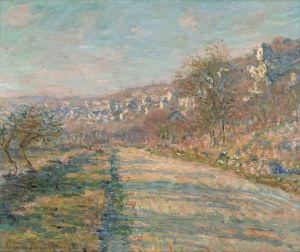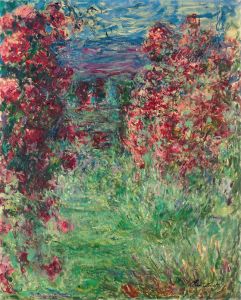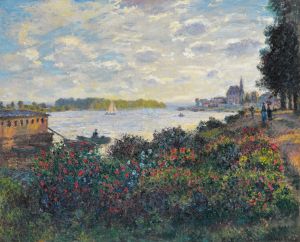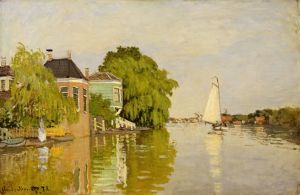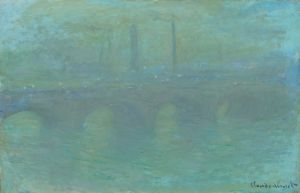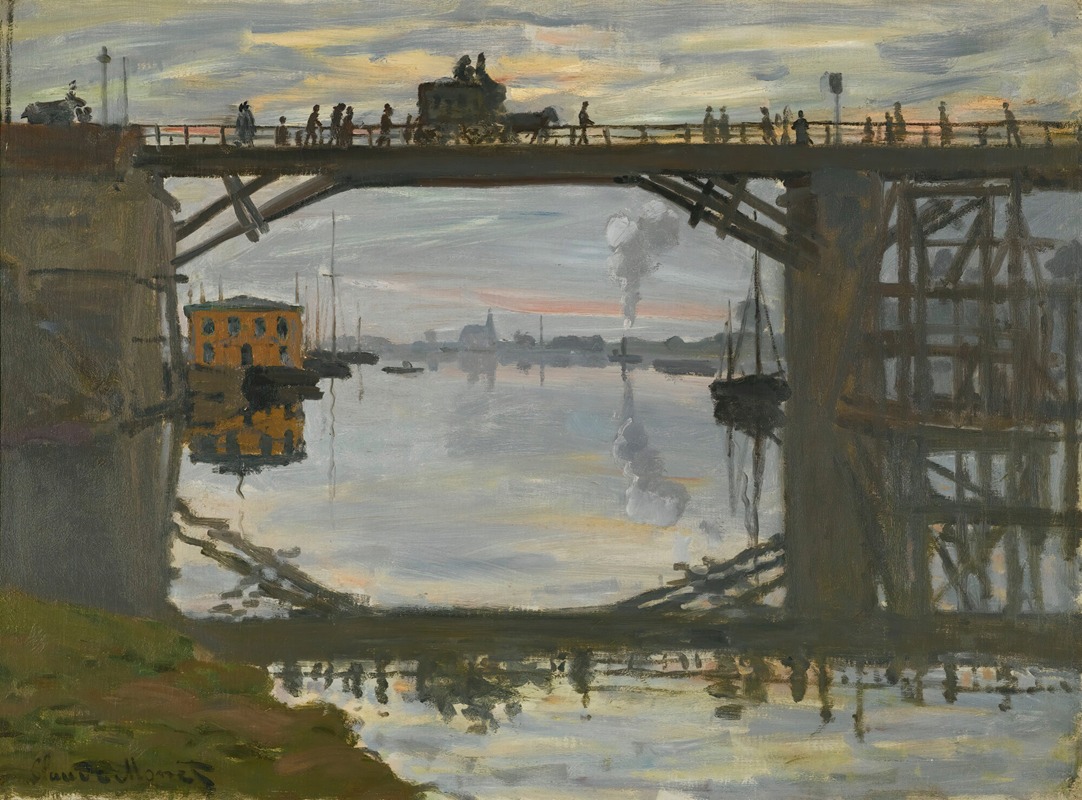
Le Pont De Bois
A hand-painted replica of Claude Monet’s masterpiece Le Pont De Bois, meticulously crafted by professional artists to capture the true essence of the original. Each piece is created with museum-quality canvas and rare mineral pigments, carefully painted by experienced artists with delicate brushstrokes and rich, layered colors to perfectly recreate the texture of the original artwork. Unlike machine-printed reproductions, this hand-painted version brings the painting to life, infused with the artist’s emotions and skill in every stroke. Whether for personal collection or home decoration, it instantly elevates the artistic atmosphere of any space.
Claude Monet's Le Pont de Bois (The Wooden Bridge) is a painting created in 1872, during the early years of the Impressionist movement. Monet, a founding figure of Impressionism, is renowned for his ability to capture fleeting moments of light, atmosphere, and movement in his works. This painting is a notable example of his focus on everyday scenes and his innovative approach to depicting landscapes and urban environments.
Le Pont de Bois depicts a temporary wooden bridge constructed over the Seine River in Argenteuil, a suburb of Paris. Argenteuil was a popular location for Monet and other Impressionist painters during the late 19th century, as it offered a balance between rural charm and the industrial changes occurring in France at the time. The bridge was built to replace a stone bridge that had been destroyed during the Franco-Prussian War (1870–1871). This historical context provides insight into the painting's subject, as it reflects the reconstruction and recovery efforts in France following the war.
The painting captures the bustling activity around the bridge, with workers and pedestrians crossing it, and boats visible on the river below. Monet's use of loose, quick brushstrokes and his focus on light and color create a sense of immediacy and vibrancy. The scene is bathed in natural light, with reflections shimmering on the water, emphasizing Monet's interest in the interplay between light and surfaces. The composition also highlights the integration of human activity within the natural and built environments, a recurring theme in Monet's work.
Le Pont de Bois is part of a series of works Monet created during his time in Argenteuil, where he lived from 1871 to 1878. This period was highly productive for the artist, as he explored new techniques and subjects that would come to define Impressionism. The painting is significant not only for its artistic qualities but also for its documentation of a specific moment in French history, as it captures the transitional period of rebuilding after the war.
Today, Le Pont de Bois is recognized as an important work within Monet's oeuvre and the broader Impressionist movement. It exemplifies the artist's ability to transform a seemingly ordinary scene into a dynamic and evocative composition. The painting is held in a private collection and is occasionally exhibited in museums and galleries, allowing audiences to appreciate Monet's mastery of light, color, and atmosphere.






